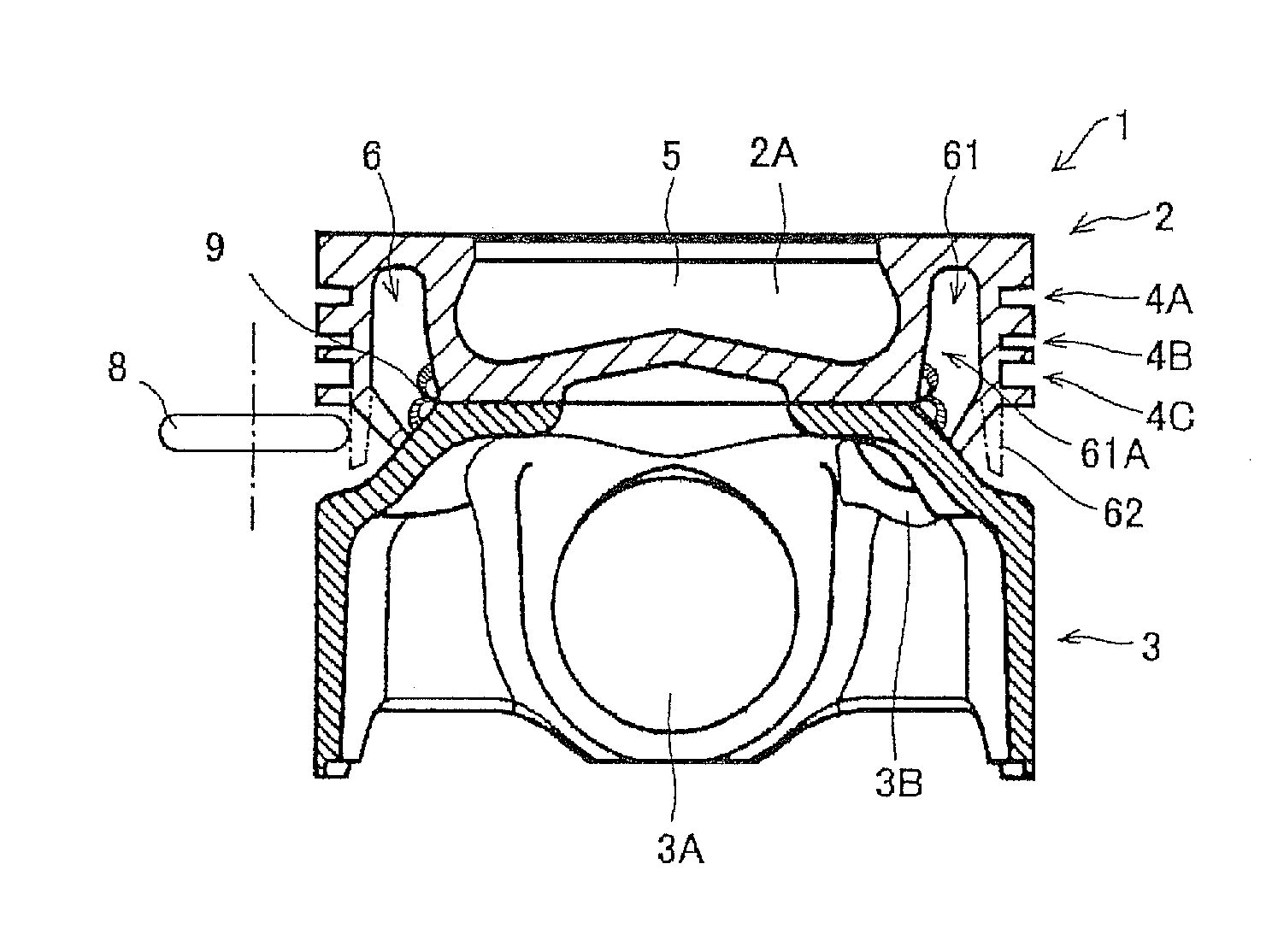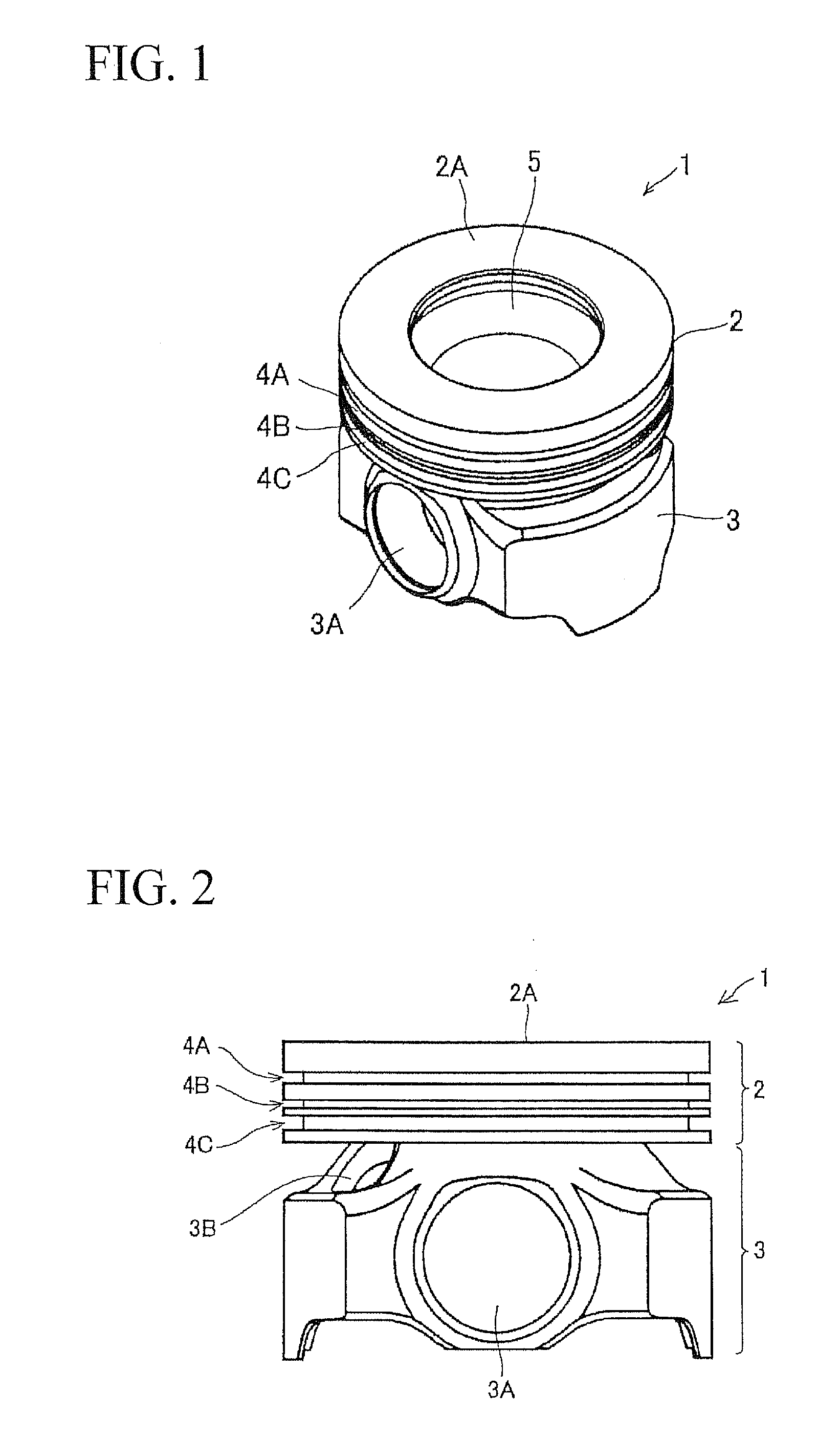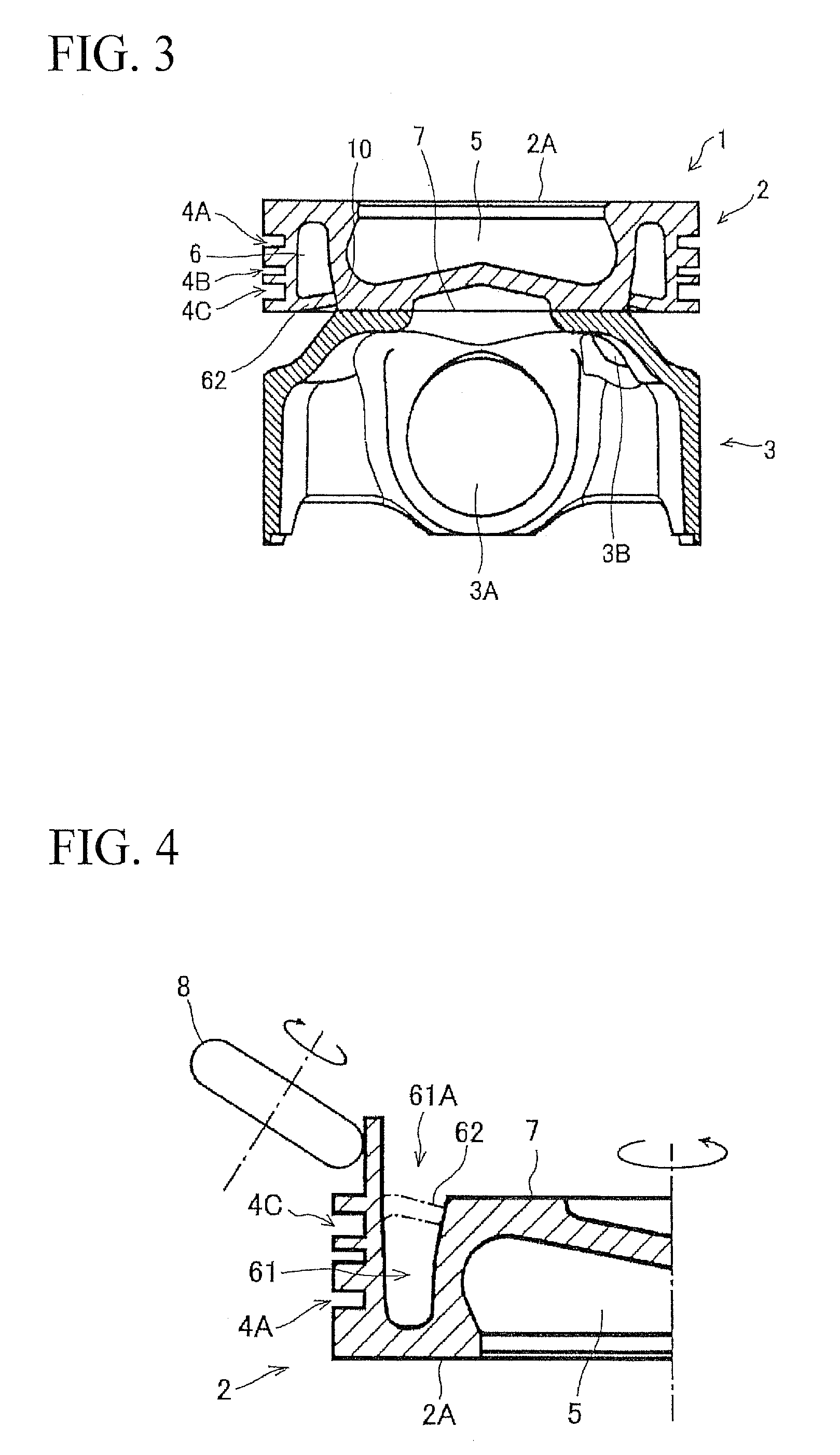Method for producing piston for internal-combustion engine
a technology of internal combustion engine and manufacturing technique, which is applied in the direction of machines/engines, manufacturing tools, mechanical apparatus, etc., can solve the problems of reducing the flowability of cooling liquid, narrowing the volume of the annular cavity, and time loss and cost, and achieves convenient and efficient production, smooth flow, and easy and well-formed
- Summary
- Abstract
- Description
- Claims
- Application Information
AI Technical Summary
Benefits of technology
Problems solved by technology
Method used
Image
Examples
example 1
[0033]A method for producing the above-described piston will now be described. First, as in the above description, the crown 2 and the skirt 3 are formed individually. In particular, an annular groove 61 shown in FIG. 4 is formed in the inner bottom of the crown 2 before the crown 2 and the skirt 3 are joined. In addition, an annular rib 62 is formed in connection with the open edge of the annular groove 61.
[0034]The opening 61A of the annular groove 61 is eventually closed with the rib 62 to thereby form the annular cavity 6. In the case of the crown 2 provided with an unfinished annular cavity 6, the crown 2 can be readily molded without a core that is complicated to form even by casting, and can be readily produced by forging or cutting machining.
[0035]In FIG. 4, the annular groove 61 is formed in the inner bottom (outer circumference of the bottom) of the crown 2 with its bottom open and the rib 62 is formed along the outer open edge of the annular groove 61. However, the rib 62...
example 2
[0039]A modification of the present invention will now be described based on FIG. 6. In this example, the crown 2 and the skirt 3 are formed individually as in Example 1 except that the annular cavity 6 is formed after the crown 2 and the skirt 3 are joined together.
[0040]In other words, the annular groove 61 and the rib 62 are formed in the crown 2 before the crown 2 and the skirt 3 are joined together as in Example 1. More specifically, the annular cavity 61 is formed between the grooves 4A to 4C and the combustion cavity 5 so as to form the annular cavity 6 in the inner bottom of the crown 2, and the annular rib 62 is formed in connection with the outer open edge of the annular groove 61. In this example, as shown in FIG. 6, the crown 2 and the skirt 3 are joined together by pressure welding. The rib 62 which extends perpendicularly downward to the skirt 3 is then pressed inwardly to bring the tip of the rib 62 into close contact with the upper outer circumference (a shoulder por...
PUM
| Property | Measurement | Unit |
|---|---|---|
| temperature | aaaaa | aaaaa |
| temperature | aaaaa | aaaaa |
| pressure | aaaaa | aaaaa |
Abstract
Description
Claims
Application Information
 Login to View More
Login to View More - R&D
- Intellectual Property
- Life Sciences
- Materials
- Tech Scout
- Unparalleled Data Quality
- Higher Quality Content
- 60% Fewer Hallucinations
Browse by: Latest US Patents, China's latest patents, Technical Efficacy Thesaurus, Application Domain, Technology Topic, Popular Technical Reports.
© 2025 PatSnap. All rights reserved.Legal|Privacy policy|Modern Slavery Act Transparency Statement|Sitemap|About US| Contact US: help@patsnap.com



